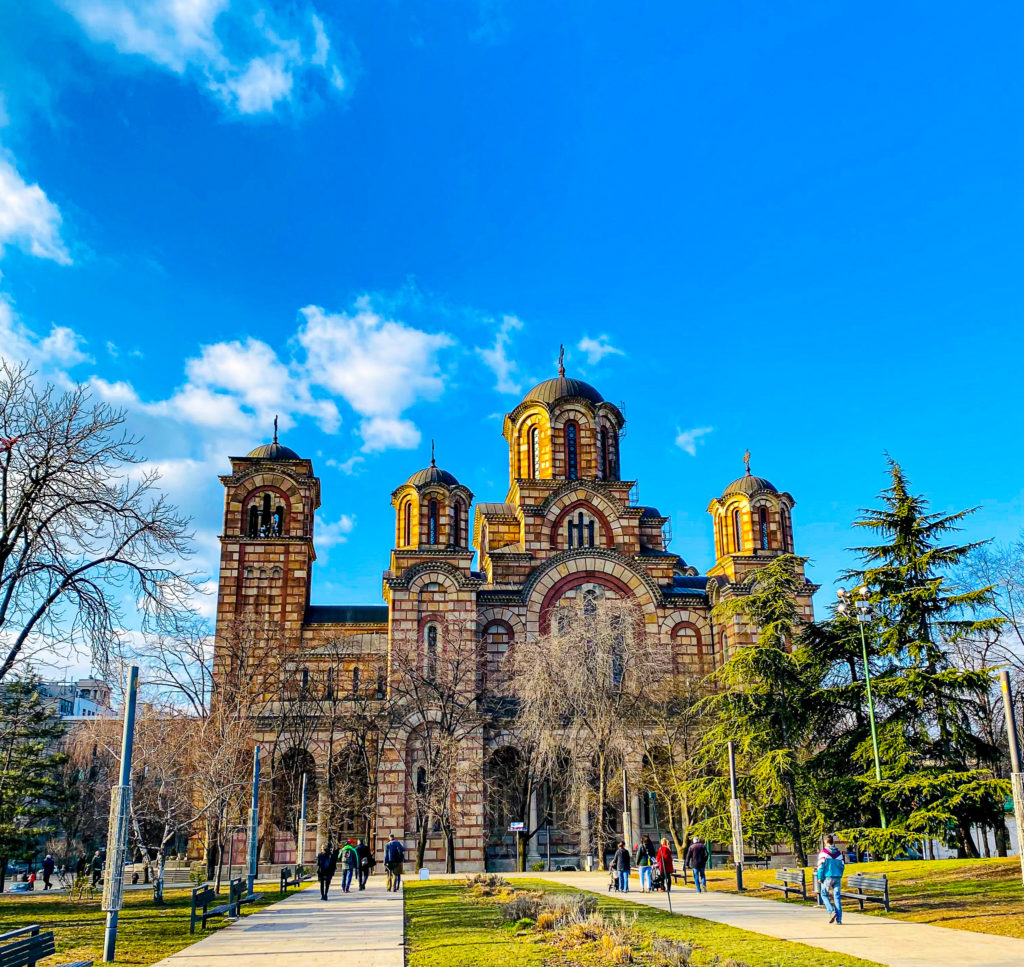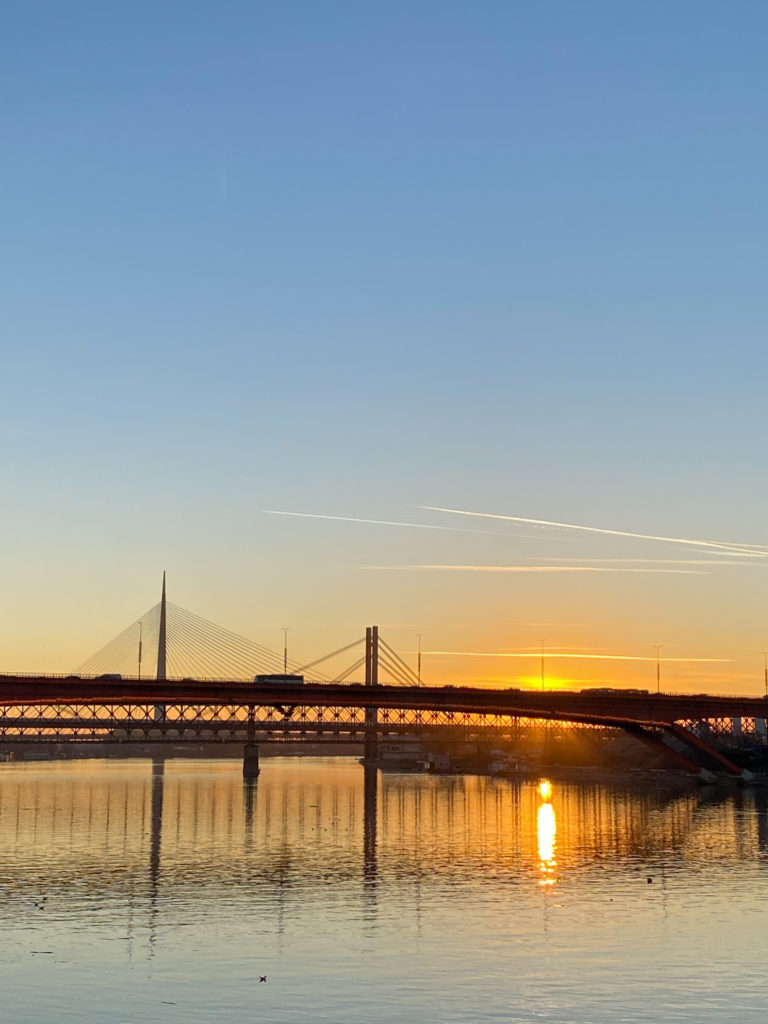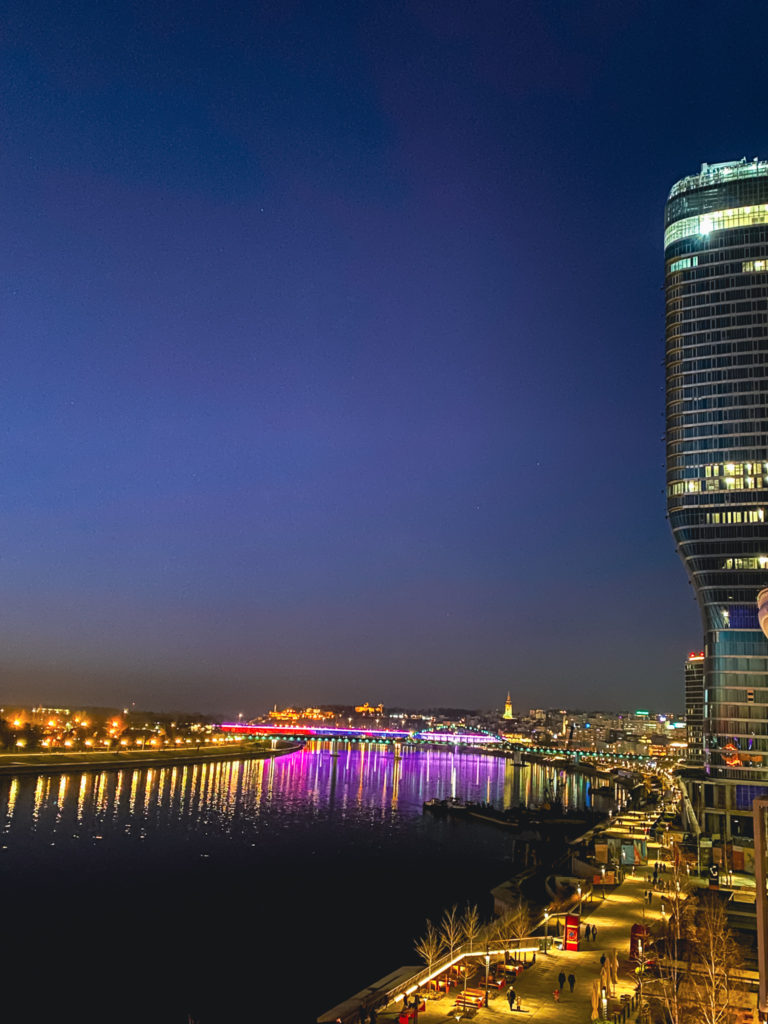
Serbia’s capital Belgrade is situated at the junction of the Danube and Sava rivers. The location has made it the coveted prize of 115 battles throughout its millennia-long lifetime. From partying on floating splavovi nightclubs to sampling the Balkans’ signature liquor rakija, there’s plenty of things to do in Belgrade.
This is a city of monumental architecture, tangible history and nightlife that seemingly never stops. Despite its rich culture and vast number of historical landmarks, the city continues to be on the road less traveled. But this clearly shouldn’t be the case.
A trip to Belgrade promises a bevy of must-see structures. But there’s so much more than the city’s beautiful architecture. Who wouldn’t want to take a sunset boat ride across the Danube River or spend the day around the Belgrade Fortress, right in the middle of an inviting local park? Tour the oldest part of town before walking across Branko’s Bridge to check out New Belgrade. The juxtaposition of the two neighborhoods couldn’t be more distinct and proves there’s something for everyone to explore.
Here are the top things to see and do when traveling to Belgrade.
Kalemegdan Fortress
The number one attraction in Belgrade is less a single sight and more a big conglomerate of everything that makes the city great. Kalemegdan Fortress has seen its fair share of conflict over the centuries. Essentially a huge park, the fortress looks out over the confluence of the Sava and Danube Rivers for what is undoubtedly the city’s most romantic spot.
Church of Saint Sava
One of the largest Orthodox churches on the planet, the Church of Saint Sava is one of the most identifiable attractions in the entire region. It dominates the city’s skyline, and at 79 metres in height, it is easy to see why. The church was built on the spot where the Ottomans burned Saint Sava’s remains in 1595. Nearly 400 years passed before the church itself was completed. The interior is still under construction. Its unfinished state adds another layer of intrigue to this monumental house of worship.
Knez Mihailova
Knez Mihailova is the social midpoint of the Serbian capital. This long thoroughfare is where all strands of Belgrade society come to be seen, whether that is businesswomen making deals in cafes or young people running aimlessly up and down it. This is the best spot for a little bit of people watching. Entire afternoons can be spent on Knez Mihailova, watching the day idly goby.
The pedestrian street has incredible architecture. There are plenty of venues for old and young, mainstream and alternative, artsy and classy.
The street is listed as Cultural-Historical Units of Great Importance since 1979, and as such is protected by the Republic of Serbia. The street follows the central grid layout of the Roman city of Singidunum (Roman name for Belgrade).
Knez Mihailova is home to multiple representative buildings and urban houses built at the end of 1870s. One of them is the building of The Serbian Academy of Sciences and Arts built in 1923-1924. The building houses the Library of the Academy, one of the richest in Belgrade; the Archive of the Academy with materials about history of Serbia; the Gallery of the Academy on the ground floor, with a special lecture hall, the bookstore and the antique shop.
Explore the area. You will find street performers, musicians, and artists selling their work. There are many cafes and bars, before heading to the popular Belgrade night clubs. Knez Mihailova is a great location when it comes to accommodation (almost everything is walking distance).
Skadarlija
It is known as Belgrade’s Bohemian Quarter. Skadarlija is more a street than an entire area, but that street is full of restaurants, bars and cafes, all dotted along the cobblestones that are a delight to look at in the morning and a struggle to walk on when inebriated. Once the domain of poets, academics and artists, Skadarlija now has both eyes focused firmly on the tourism sector. With that in mind, some of the best restaurants in the city can be found on this short stretch of street.
Nikola Tesla Museum
Nikola Tesla is probably the most popular modern Serb. The physicist and the inventor’s incredible life is honoured in an excellent city centre museum. Located within a diplomatic neighbourhood in Vračar, the museum displays a number of the great man’s inventions along with many of his personal items. If you ever wanted to create light simply by holding a light bulb, this is the place to go.
The entrance to the museum and a guided tour in English is 800 RSD (€6.8 or $7.6), and the opening hours are 10 am to 5 pm. The exhibit has two sections. The first one is about Tesla’s life, and the second one is about his scientific research and inventions. The second one is also an interactive exhibit featuring 3D renders or fully-functioning reproductions like an induction coil producing discharges at 500,000 volts.
Tašmajdan Park
Probably the best kept and most beautiful city park, Tašmajdan is located only 15 min walk from the Republic Square and 5 min from the National Assembly of Serbia. Sit on the park’s benches and enjoy the smell of flowers and the sound of water fountains and children playing.
St. Mark’s Church is facing the park. It was built in place of the Small Palilulska church that was destroyed in 1941 bombing. Today’s church was built in the medieval Serbo-Byzantine style, designed after the Gračanica monastery.

Republic Square and the National Theatre
Belgrade’s Republic Square has a large number of people loitering on it. This is Belgrade’s main meeting point, where social evenings begin kod konj (by the horse). Some of Belgrade’s most important buildings are found here, including the National Museum and the National Theatre. Head to the website for the full schedule, and enjoy some high culture at low prices.
Terazije Street
Terazije area is in the city centre and covers the area from Sremska Street to Kralja Milana Street. Terazije is the most famous square in Belgrade. It started to take shape as an urban feature in the first half of the XIX century.
The origin of the name Terazije comes from the Turkish word for water towers used for water supply. One such water tower built in the Ottoman Empire was replaced with a drinking fountain, Terazijska česma, located in front of the Hotel Moskva. The fountain is still operational and it is a beautiful landmark and a symbol of the street.
Hotel Moskva was built at the beginning of the 20th century in the secession style and to this day it is one of the most beautiful places to have a coffee and chat with friends. Another good hotel nearby is Zepter Hotel.

Avala Tower
While not technically a part of Belgrade itself, Avala is a nearby mountain that overlooks the city. Avala Tower is a 205-metre tall spindle that was destroyed by NATO in 1999 before being rebuilt in 2009. This is the tallest tower in the Balkans, and it is arguably the number one attraction at Avala. Avala is housing the Monument to the Unknown Hero, a masterpiece by Ivan Mestrović paying homage to those who fell in World War I. There is also a monument to Vasa Čarapić, one of the heroes of the First Serbian Uprising.
Belgrade Nightlife
In Belgrade, every night is Friday night. Everyone is ready to party all the time, dance the night away, and go straight to work the next day. It’s really hard to resist the temptation when you know that on any given evening there are countless clubs out there full of young, gorgeous people having so much fun.
The mainstream clubbing scene consists of venues playing house music, progressive, tech house, and turbo-folk (a sub-genre of folk music with dance and pop elements specific to Serbia), but you can also find places specialising in R&B, pop, rock, trance, alternative, jazz, or just about any other type of music in existence.
You can find two types of clubs in Belgrade: winter clubs and summer clubs. Winter clubs are indoor clubs which are usually open during the winter season – from late September to early May. When the summer season comes, they all close their doors as the big openings of summer clubs start. These floating river clubs or barges (called “splavs” or “splavovi”) are anchored at the riverbank and they’re the main locations for partying during hot summer nights.
Check out this site for current events. Visit Belgrade and party until dawn!
Zemun
Zemun is a must visit attraction in Belgrade, as this small town within a city is known for its fierce independence. Zemun was swallowed up by Belgrade in the 1930s. Its former position as an Austrian Empire border town means you can find a different atmosphere when compared to the big city centre. Zemun Kej is one of the most engrossing walkways in the city, and the view from Gardoš Hill and the Millennium Tower is one of the finest going.
Ada Ciganlija
Ada Ciganlija, a river island turned peninsula, is affectionately known as Belgrade’s Seaside, and it is generally heaving with people once the temperatures creep above 20 degrees Celsius (68 degrees Fahrenheit) in summer. By the time those temperatures hit 40 °C (104 °F), this is the best place to be. There are plenty of bars around for refreshment, making a day of lounging by the water even easier.
Belgrade Waterfront
Belgrade waterfront is the newest addition to Belgrade. Tucked away by the Sava River, Belgrade Waterfront is a monumental urban project, creating a new city centre and a new international destination.
The waterfront has a beautiful promenade where you can bike, walk, and enjoy the views. Along the promenade, there are lots of restaurants and bars where you can explore the nightlife, enjoy your morning coffee, or have an afternoon lunch with friends or family.
The area is mostly business-oriented with few residential buildings and the biggest shopping mall in Belgrade. BW is perfectly located, only minutes away from Slavija, Belgrade fair, Ada Ciganlija, Kalemegdan, and Republic Square.
The idea for the project was very controversial. But BW is here to stay and worth the visit. Take a walk through the picturesque urban corner starting at the Savamala historical district located down by the river, which represents one of the oldest parts of the city. The new Belgrade Waterfront is now built in continuation, making the right bank of the river Sava the most attractive city property.


Have you visited Belgrade? What’s your favourite spot in the city? Let us know in the comments section.








